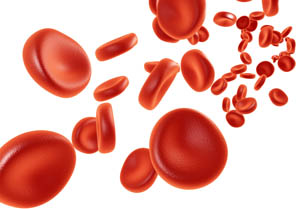Stop The Clock On Septic Shock With The PALS Algorithm
Many medical issues and health concerns derive from infection, trauma and chronic conditions. Among children, the low risk of chronic health problems does not negate the impact of serious medical issues that arise, including sepsis. Although sepsis carries a severe outlook for those that go undiagnosed, the PALS algorithm and immediate life-saving interventions can help health care professionals recognize and treat sepsis before it leads to septic shock and possible loss of life.
Health care professionals need to understand the basics of sepsis and its relationship to septic shock depending on the severity of infection and influence on other bodily systems. Understanding more about this condition can reduce unforeseen risks, including the increased risk of respiratory or cardiac arrest.
What is Septic Shock
 Sepsis and septic shock are similar, but septic shock is the most severe complication of sepsis. Septic shock occurs when sepsis progresses past the body’s ability to overcome its adverse effects. Severe cases, also identified as septic shock, are associated with a mortality rate between 20-50%, reports Apollo MD. However, immediate action can reduce risk of mortality. At the same time, the severe effects may lead to an inaccurate diagnosis and increase the risk of prolonged identification and treatment.
Sepsis and septic shock are similar, but septic shock is the most severe complication of sepsis. Septic shock occurs when sepsis progresses past the body’s ability to overcome its adverse effects. Severe cases, also identified as septic shock, are associated with a mortality rate between 20-50%, reports Apollo MD. However, immediate action can reduce risk of mortality. At the same time, the severe effects may lead to an inaccurate diagnosis and increase the risk of prolonged identification and treatment.
Causes of Sepsis
According to the Centers for Disease Control and Prevention (CDC), sepsis is an extreme bodily response to an infection. It occurs when an existing infection spreads through the blood and triggers an unusually strong immune response. Anyone can develop sepsis. The only prerequisite is an existing infection.
For example, an infected tooth or wound may cause septicemia, an infection already in the blood. As the infection continues, its effects begin to impact the bodily functions. The kidneys begin to fail, and the circulatory system becomes unstable. The lungs lose their ability to exchange oxygen, and the entire body falters.
The simplest of infections could lead to sepsis when left untreated. Among children, the risk is greater, says HealthyChildren.Org. A child’s notion of invincibility puts them at risk for injury and accident. While parents can look for risks, not all are visible. Even when the best conditions are met, sepsis could still take hold. Basically, it boils down to treating infections before they spread and lead to additional health problems.
Prevalence of Sepsis in the U.S.
Sepsis affects more than 200,000 people annually in the U.S. More than 75,000 children and infants develop severe sepsis, leading to septic shock as well, and 7,000 do not survive. That is a mortality rate greater than the rate of cancer-related, pediatric deaths per year. Unfortunately, care may come too late for those with sepsis, and even then, health care professionals may focus on the immediate needs, overlooking sepsis as a cause of illness. Left untreated, sepsis will lead to organ failure, tissue death and compounding health problems.
Sepsis also affects demographics differently. Those with weakened immune systems, people over age 65, those with a history of sepsis, known exposure to pathogens and children less than 12 months have the highest risk of sepsis. However, recognizing sepsis earlier in the course of care, such as when performing life-saving care as part of the PALS algorithm, can mean the difference between life and death, especially among children that cannot express their state of well-being.
Symptoms of Sepsis in Pediatric Patients
The best way to prevent septic shock lies in recognizing the symptoms of sepsis. Unfortunately, its symptoms closely mirror the symptoms of any systemic infection. As a result, it is imperative any child that exhibits the symptoms of an infection that cannot be tied to a treatable illness, such as the flu, be screened for sepsis. This may involve blood cultures and routine lab work, including serum lactic acid levels and a complete blood count.
The leading symptoms of sepsis include:
- Rapid heart rate. Tachycardia is the heart’s natural mechanism to attempt to compensate for decreased function of the lungs and organs. As the conditions worsen, each beat grows shorter, and unfortunately, a faster heart rate results in further decompensation.
- Bradycardia. In addition to tachycardia, younger children such as infants may experience a slower heart rate in the late stages of sepsis.
- Rapid, shallow respiration rate. Fewer respirations lead to a higher carbon dioxide (CO2) level within the blood. The response is to increase heart rate to compensate for decreased lung capacity, but even this contributes to a higher heart rate. It becomes a self-propagating cycle.
- Confusion, disorientation or dizziness. Decreased oxygenation results in diminished mental capacity, often presenting as confusion or delirium. In children, this may be characterized by excessive lethargy or an inability to follow conversation appropriate for their age.
- Clammy, cold hands and feet. This is another compensatory mechanism where poor perfusion is evident. Checking capillary refill by pressing a fingernail can reveal delayed color return, indicating significant loss of perfusion.
- Shortness of breath or extreme pain, which in infants may be characterized by extreme crying. Shortness of breath can worsen hyperventilation and pain, and may eventually contribute to bradycardia.
- Nausea and/or vomiting. Reduced organ function may lead to gastrointestinal sluggishness and symptoms similar to colic.
- Fever or even low temperature in infants. Due to limited muscle tone, infants have a decreased ability to compensate, increasing their risk of poor outcomes from sepsis.
Given the potential health risks associated with sepsis, health care professionals should consider sepsis as a potential factor in any instance of respiratory or cardiac distress. After all, sepsis contributes to poor perfusion of tissues.
Why Recognizing Sepsis Promotes Survival
Delays in recognizing a problem—even when EKG results and breathing appear normal—contribute to poor patient outcomes. For instance, a pulse well below normal limits (such as 60 beats per minute) can indicate pulseless electrical activity. Additionally, hyperventilation and tachycardia can together lead to inadequate perfusion to sustain homeostasis.
An infection may spread until the immune response contains it. In bacterial infections, antibiotics support the body’s natural defenses, while antiviral agents work similarly against viruses. However, when the level of pathogens is too high, immediate treatment is vital. Administering the appropriate medication can slow the infection, but any delay may allow damage to occur. Therefore, caregivers must act promptly on suspected cases of sepsis, even when clear indicators are absent.
The PALS Algorithm and Sepsis
 The PALS algorithm provides a general roadmap for treating poor perfusion caused by tachycardia. Treatments under the PALS algorithm include measures to address reversible causes such as hypotension and hypovolemic shock. When these measures do not suffice and the cause of tachycardia is unclear, health care professionals turn to a specific subset of the algorithm. As explained by ECCGuidelines.Heart.Org, the first step is to evaluate the QSR interval; if it exceeds 0.09 seconds and the child shows signs of mental compromise, shock, and low blood pressure, synchronized cardioversion protocols are recommended.
The PALS algorithm provides a general roadmap for treating poor perfusion caused by tachycardia. Treatments under the PALS algorithm include measures to address reversible causes such as hypotension and hypovolemic shock. When these measures do not suffice and the cause of tachycardia is unclear, health care professionals turn to a specific subset of the algorithm. As explained by ECCGuidelines.Heart.Org, the first step is to evaluate the QSR interval; if it exceeds 0.09 seconds and the child shows signs of mental compromise, shock, and low blood pressure, synchronized cardioversion protocols are recommended.
In other words, administer electric shocks and, if necessary, sedate the child—though cardioversion should not be delayed for sedation, especially when IV or IO access is not yet available.
How to Reduce the Risk of Subsequent Distress After Sepsis
The most critical steps in reducing the risk of subsequent sepsis complications involve completing the full course of treatment and promptly reporting any symptoms. Those who have previously experienced sepsis are at increased risk for future infections.
Additionally, health care professionals should administer antibiotics within one hour of a sepsis diagnosis. Depending on the situation, it may be necessary to increase the fluid bolus volume to 200 mL per kg while using multiple antibiotics to cover all potential pathogens. Once lab cultures return, the antibiotic regimen can be refined. As noted by Medscape, timely administration of medications following cardioversion and within the PALS algorithm is critical, as delays can lead to worsening sepsis and complications such as bradycardia, tachycardia, or even the development of superbugs.
Four Additional Measures to Improve Septic Shock Recovery
1. Ensure clean care settings. This involves more than just janitorial duties—it includes verifying the cleanliness of in-room medical devices, frequently replacing suction canisters, and advising anyone with a suspected illness to avoid the patient.
2. Use proper, sterile technique. Employing sterile techniques when administering medications (IM, IV, or IO) or performing wound care is essential to prevent pathogen introduction.
3. Wash your hands frequently. Handwashing is key to preventing the spread of infection between patients.
4. Monitor vital signs for change in status. Any deviation in vital signs should be reported immediately. Health care professionals should also check for a pulse during assessments, keeping in mind the PALS guidelines that define pulseless electrical activity as a heart rate below 60 beats per minute.
Stop Septic Shock With Quality Life-Saving Skills
Sepsis and septic shock represent major threats, especially to children. Failure to recognize sepsis can lead to poor outcomes and long-term or permanent injury. By understanding sepsis and taking prompt action, health care professionals can effectively counteract its progression.
Have you cared for someone who suffered from sepsis, or worked at a facility that follows sepsis-recognition protocols? Share your thoughts and experiences on social media, and consider enrolling in a life-saving skills course to ensure you know when to look for sepsis in the context of the PALS algorithm.

